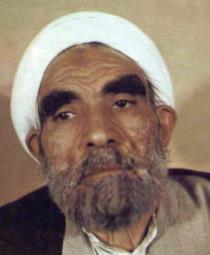 Ali Hashemi Sanjani was born on March 22, 1911 in Sanjan, a village close to Arak, the capital of Iran’s Markazi province into a religious family. His father, Mahmoud, was a revered cleric in the region and his mother was a pious descendent of Imam Ali (AS), the first Shiite Imam.
Ali Hashemi Sanjani was born on March 22, 1911 in Sanjan, a village close to Arak, the capital of Iran’s Markazi province into a religious family. His father, Mahmoud, was a revered cleric in the region and his mother was a pious descendent of Imam Ali (AS), the first Shiite Imam.
Ali attended a traditional school (Maktab) in his village before he moved to Arak to study at Hawza. Proving himself as a brilliant student, he moved to Qom to begin his advanced Hawza studies by attending courses by Ayatollah Boroujerdi, Imam Khomeini, Ayatollah Hojjat and Ayatollah Golpayegani. He could also recite the whole Quran and parts of Nahjulbalaghah (a collection of Imam Ali’s words) by heart.
The Martyr joined Imam Khomeini’s Islamic movement by holding religious meetings and Islamic speeches, introducing Imam Hussein’s uprising in Karbala as a role model for Iran’s Islamic Revolution. He was frequently sued by SAVAK, enduring the regime’s imprisonments and tortures and no-speech sentences for several times.
Ali Hashemi did not leave his Islamic activities after the victory of the Islamic Revolution. Whenever necessary, he did his Islamic duties by resisting eclectic ideologies such as those preached and practiced by the terrorist Mujahedin-e Khalq Organization (MKO, a.k.a. MEK). He also represented Arak in the first post-Revolution parliament.
Ali Hashemi Sanjani was martyred on June 28, 1961, along with more than 70 other Iranian senior officials, as a result of a deadly blast by the MKO in the headquarters of the Islamic Republic Party in Tehran. He was buried in Qom’s well-known cemetery of Sheikhan.
